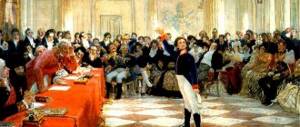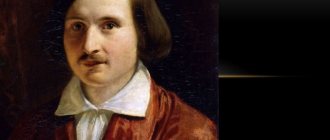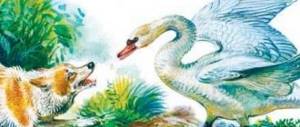Presentation – Literary reading 4th grade
Content
Slides and text of this presentation
Slide 1
MCOU Kupreevskaya Secondary School L. N. Tolstoy. Life and art. (Literary reading grade 4)
Slide 2
Tolstoy Lev Nikolaevich (1828 – 1910), prose writer, playwright, publicist. Born on September 9 (August 28, old style) in the Yasnaya Polyana estate, Tula province. By origin he belonged to the oldest aristocratic families in Russia. He received home education and upbringing.
Slide 3
His mother, née Princess Volkonskaya, died when Tolstoy was not yet two years old, but according to the stories of family members, he had a good idea of “her spiritual appearance.” Tolstoy’s father, a participant in the Patriotic War, who was remembered by the writer for his good-natured, mocking character, love of reading, and hunting, also died early (1837). The children were raised by a distant relative, T. A. Ergolskaya, who had a huge influence on Tolstoy: “she taught me the spiritual pleasure of love.” Childhood memories always remained the most joyful for Tolstoy and were reflected in the autobiographical story “Childhood.” ”Childhood period“ The writer’s father is Nikolai Tolstoy
Slide 4
L.N. Tolstoy with his brothers. Tolstoy was the fourth child in the family; he had three older brothers: Nikolai (1823-1860), Sergei (1826-1904) and Dmitry (1827-1856). In 1830, Sister Maria was born. His mother died with the birth of her last daughter, when he was not yet 2 years old.
Slide 5
When Tolstoy was 13 years old, the family moved to Kazan, to the house of a relative and guardian of the children, P. I. Yushkova. Living in Kazan, Tolstoy spent 2.5 years preparing to enter university; at the age of 17 he entered there. Lev Nikolaevich already at that time knew 16 languages, read a lot and studied philosophy. But his studies did not arouse any keen interest in him and he passionately indulged in social entertainment. In the spring of 1847, having submitted a request for dismissal from the university “due to poor health and domestic circumstances,” Tolstoy left for Yasnaya Polyana with the firm intention of studying the entire course of science. Kazan University P. I. Yushkova is the aunt of the writer Kazan University. House in Yasnaya Polyana.
Slide 6
After a summer in the village, in the fall of 1847, Tolstoy went first to Moscow, then to St. Petersburg to take candidate exams at the university. His lifestyle changed frequently during this period. At the same time, he had a serious desire to write and the first unfinished artistic sketches appeared. “The stormy life of adolescence”
Slide 7
In 1851, his elder brother Nikolai, an officer in the active army, persuaded Tolstoy to go together to the Caucasus. Tolstoy lived for almost three years in a Cossack village on the banks of the Terek. In the Caucasus, Tolstoy wrote the story “Childhood” and sent it to the Sovremennik magazine without revealing his name. Tolstoy's literary debut immediately brought real recognition. The story “Childhood”
Slide 8
In 1854, Tolstoy was assigned to the Danube Army in Bucharest. A boring staff life forced him to transfer to the Crimean Army, to besieged Sevastopol, where he commanded a battery on the 4th bastion, showing rare personal courage (awarded the Order of St. Anne and medals). In Crimea, Tolstoy was captured by new impressions and literary plans (he was going to publish a magazine for soldiers, among other things), here he began to write a cycle of “Sevastopol stories.” Crimean campaign
Slide 9
In November 1855, Tolstoy arrived in St. Petersburg and immediately entered the Sovremennik circle (N. A. Nekrasov, I. S. Turgenev, A. N. Ostrovsky, I. A. Goncharov, etc.), where he was greeted as a “great the hope of Russian literature.” In the fall of 1856, Tolstoy, having retired, went to Yasnaya Polyana, and at the beginning of 1857 he went abroad. He visited France, Italy, Switzerland, Germany. In the fall he returned to Moscow, then to Yasnaya Polyana. Among writers and abroad
Slide 10
In 1859, Tolstoy opened a school for peasant children in the village and helped establish more than 20 schools in the vicinity of Yasnaya Polyana. In 1862 he published the pedagogical magazine “Yasnaya Polyana”, the books “ABC” and “New ABC”, as well as children's books for reading. Folk school
Slide 11
In September 1862, Tolstoy married the eighteen-year-old daughter of a doctor, Sofya Andreevna Bers, and immediately after the wedding he took his wife from Moscow to Yasnaya Polyana. During their 17 years of marriage, they had 13 children.
Slide 12
In the 1870s, still living in Yasnaya Polyana, continuing to teach peasant children and developing his pedagogical views in print, Tolstoy worked on the novels: “War and Peace”, “Anna Karenina”, the story “Cossacks”, the first of works in which Tolstoy's great talent was recognized as a genius.
Slide 13
The turning point years radically changed the writer’s personal biography (Tolstoy’s proclaimed refusal to own private property caused sharp discontent among family members, especially his wife). In the late autumn of 1910, at night, secretly from his family, 82-year-old Tolstoy, accompanied only by his personal doctor D.P. Makovitsky, left Yasnaya Polyana. The journey turned out to be too much for him: on the way, Tolstoy fell ill and was forced to get off the train at the small Astapovo railway station. Here, in the station master's house, he spent the last seven days of his life. Tolstoy's funeral in Yasnaya Polyana became an event of all-Russian scale. Astapovo station
Slide 14
Throughout his life, L.N. Tolstoy expanded his knowledge and was a highly educated person. In his works, L.N. Tolstoy said that only one who works, who does good to other people, who honestly fulfills his duty can be called a person. It is shameful and unworthy of a person to live by someone else’s labor. On November 10 (23), 1910, he was buried in Yasnaya Polyana, on the edge of a ravine in the forest, where as a child he and his brother were looking for a “green stick” that kept the secret of how to make all people happy.
lusana.ru
Leo Tolstoy Biography lesson in 5th grade Prepared by Shalyganova L.A. - presentation
Leo Tolstoy Biography lesson in 5th grade Prepared by Shalyganova L.A.
Half a century after Tolstoy's death, Vladimir Nabokov lectured on Russian literature to American students. One of his students, Alfred Appel, recalled it this way: “Suddenly Nabokov interrupted the lecture, walked, without saying a word, along the stage to the right wall and turned off the three lamps under the ceiling. Then he went down the steps, there were five or six of them, into the hall, walked heavily along the entire aisle between the rows, followed by the amazed turn of two hundred heads, and silently lowered the curtains on three or four large windows... The hall plunged into darkness... Nabokov returned to the stage, climbed the steps and approached the switches. In the firmament of Russian literature,” he announced, “this is Pushkin!” The lamp in the far left corner of our planetarium flashed. This is Gogol! A lamp flashed in the middle of the hall. This is Chekhov! The lamp on the right flashed. Then Nabokov came down from the stage again, went to the central window and unhooked the curtain, which flew up with a loud knock: Bam! As if by magic, a wide, dense beam of dazzling sunlight burst into the audience. And this is Tolstoy! - thundered Nabokov.
Leo Tolstoy ( ) Tolstoy Lev Nikolaevich, prose writer, playwright, publicist. Born on September 9 in the Yasnaya Polyana estate, Tula province.
Childhood By origin he belonged to the most ancient aristocratic families in Russia. He received home education and upbringing.
After the death of his parents (mother died in 1830, father in 1837), the future writer with three brothers and a sister moved to Kazan, to his guardian P. Yushkova.
Tolstoy brothers: Sergei, Nikolai, Dmitry, Lev
At the age of sixteen he entered Kazan University. In 1847, without completing the course, he left the university and came to Yasnaya Polyana, which he received as property under the division of his father's inheritance.
He spends the next four years in search: he tries to reorganize the life of the peasants of Yasnaya Polyana (1847), lives a social life in Moscow (1848), goes to St. Petersburg University to take exams for the degree of candidate of law (spring 1849), is assigned to serve as a clerical employee in Tula noble parliamentary assembly (autumn 1849).
In 1851, he entered military service in the Caucasus, where he began to seriously engage in literary creativity, writing the story “Childhood,” which received Nekrasov’s approval and was published in the Sovremennik magazine.
L.N. Tolstoy (left) with his brother Nikolai before leaving for the Caucasus. Daguerreotype. 1851.
In 1854, Tolstoy took part in the defense of Sevastopol. Awarded the Order of St. Anna with the inscription “For bravery” and medals “For the defense of Sevastopol”.
In the fall of 1856, he retired (“A military career is not mine…” he writes in his diary) and in 1857 he went on a six-month trip abroad.
In 1855, having arrived in St. Petersburg, he became close to the staff of the Sovremennik magazine, met I. Turgenev, I. Goncharov, A. Ostrovsky, N. Chernyshevsky.
In 1862, Tolstoy’s life and his way of life were streamlined for many years: he married the daughter of a Moscow doctor, Sofya Andreevna Vera, and led a patriarchal life on his estate as the head of an ever-increasing family. The Tolstoys raised nine children.
L.N. Tolstoy with his wife and children
L.N. Tolstoy with his granddaughter Tanya. Photo 1909.
Do good in secret and regret it when they find out about it, and you will learn the joy of doing good.
Presentation of the biography of Leo Tolstoy (4th grade) on literature
Home » Presentations on literature » 4th grade » biography of Leo Tolstoy
A ready-made school presentation about the biography of Lev Nikolaevich Tolstoy was made as a methodological development necessary for getting acquainted with the work and life of the writer in literature lessons in the 4th grade. Lev Nikolaevich Tolstoy gained worldwide fame thanks to “War and Peace” and “Anna Karenina,” which are considered the greatest novels of Russian prose of the 19th century.
Lev Nikolaevich Tolstoy was born on September 9, 1828 on the family estate of Yasnaya Polyana, south of Moscow, the fourth of five children in the family of wealthy Russian landowner Nikolai Ilyich Tolstoy. His parents died when he was a child, and his older brothers and relatives took care of his upbringing. The death of his father and grandmother left an indelible impression on the biography of Leo Tolstoy, he came to the conclusion that death can come at any time, and that happiness lies in simply enjoying the present. At the age of nine, the family moved to Moscow, but he returned to Yasnaya Polyana every summer.
Nine-year-old Leo Tolstoy had a bulbous nose, thick eyebrows, and large lips; he was convinced that he was ugly. Every day he prayed and asked God to make him as beautiful as his brother Nikolai looked. When that didn't work, he took scissors and cut off the eyebrows, but they grew even thicker than before. Worries about his appearance made him shy.
In 1844, Tolstoy was admitted to Kazan University, but two years later he returned to Yasnaya Polyana and spent a lot of time traveling between Moscow and St. Petersburg. Thanks to his knowledge of several languages, he became a polyglot. New acquaintances attracted Tolstoy to drinking alcohol, visiting brothels and gambling establishments, which drove him into debt and agony. But he soon realized that he was living a meaningless life and also attempted to pass university exams, but in the end, he enlisted in the army, following in the footsteps of his older brother. It was then that the first literary works appeared in Tolstoy’s biography.
In 1862, Leo Tolstoy married Sofya Andreevna Bers, who was 16 years younger than him. The couple had thirteen children, of whom five died at an early age. Sonya acted as Tolstoy's secretary, proofreader and financial director as he composed his greatest works. The relationship between the spouses deteriorated when his beliefs became radical and he decided to renounce the wealth he had inherited and earned.
Tolstoy began writing his masterpiece, War and Peace, in 1862; the first six volumes of the work were published from 1863 to 1869. This great novel takes on the responsibility of reflecting world history and introducing important figures such as Alexander and Napoleon. Anna Karenina, Tolstoy's next epic, was begun in 1873 and published in full in 1878. His early publications included autobiographical works, for example, Childhood, Adolescence, Youth (1852-1856). Although Tolstoy's literary works are works of fiction, the novels reveal aspects of the writer's own life and personal experiences. Tolstoy was a master at writing about Russian society, evidence of which is reflected in the story “The Cossacks” (1863). His later works, such as The Death of Ivan Ilyich (1886), focused attention on the Christian and social conditions of Russia.
In recent years, Tolstoy became more inclined towards ascetic morality and became the author of non-violent preaching. Leo Tolstoy died on November 20, 1910 at the age of 82 due to pneumonia.
In more detail, the biography of Lev Nikolaevich Tolstoy is described in the presentation for a literature lesson. The work describes the poet's personal life, characteristics of the most famous works, photographs and reproductions of paintings.
The total number of slides is 33 slides.
The finished presentation of the biography of Leo Tolstoy for 4th grade is posted for informational purposes.
You can download or send the presentation by email to your teacher, classmate or friend.
100ppt.ru







